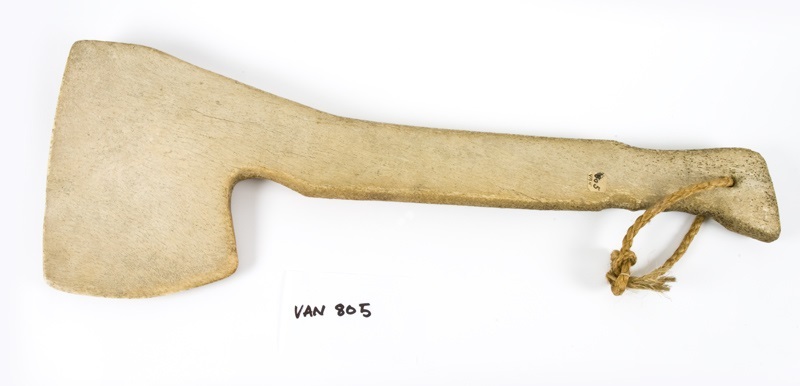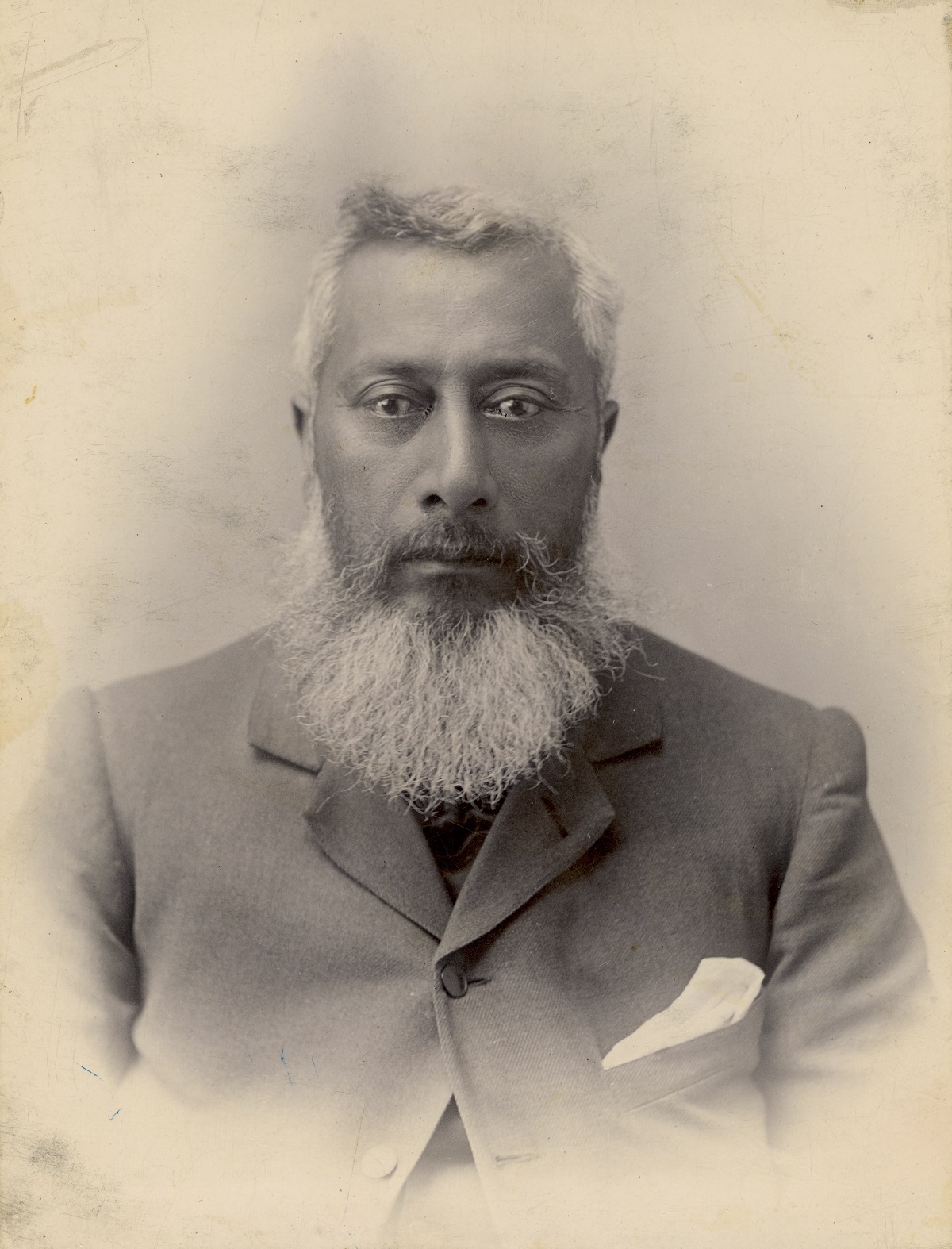Collections Technician Ed Lust looks at the pātītī, a single-handed weapon representing a fusion of Māori and European cultures.
To create a pātītī an iron axe-head was fastened to a carved timber or whalebone handle resulting in a weapon that was practical and uniquely decorated. Prior to the introduction of the musket, the pātītī was a weapon favoured by Māori in the New Zealand Land Wars.

In Autumn 1773, from the deck of Resolution, Captain James Cook spotted Māori paddling their canoes cautiously towards him before retreating again to the cover of trees. After dinner Cook, a small group of officers and William Wales, the astronomer, rowed ashore in an attempt to set-up an observatory and to make contact with the cautious Māori. While the ‘Natives’ were nowhere to be seen, Cook and his men were able to inspect their canoe.
In his journal Wales noted:
The workmanship was but rude yet probably were we to see the tools which they have to effect it with we might be rather surprized that we found it no worse … Capt Cook left a hatchet, a looking glass, a medal or two & some other Toys in the Canoe.
The sudden presence of these unfamiliar objects no doubt caused a stir with Māori when they found them. However it was the iron-bladed hatchets and axes that would prove most coveted. On his third and last voyage to New Zealand (1776–1779) on the vessels Resolution and Discovery, Cook and his crew took with them over 300 axes and at least 500 hatchet blades for trading.
In the century that followed the iron blades were still a desirable commodity. Most famously, missionary Samuel Marsden reportedly traded dozens of axe-heads with Māori for hundreds, perhaps even thousands of hectares of land. Some reports state that he traded 48 axe-heads for 30,000 acres. It is due to this trading that the traditional Māori wahaika (club), and other short weapons, evolved into the pātītī (hatchet).
Pātītī of various designs have been recovered throughout New Zealand, each showing their designer’s ingenuity in adapting to new materials while maintaining traditional methods. The Museum of New Zealand Te Papa Tongarewa holds a pātītī with a blade repurposed from the point of a whaling harpoon. Given Māori involvement in the whaling boom of the nineteenth century, it is not surprising that whale bone would prove a more personal and popular material for making tools.

A unique pātītī parāoa (whalebone hatchet) from Canterbury Museum’s collection (above) can currently be seen in the exhibition Ngā Taenga mai Arrivals at Akaroa Museum. This pātītī parāoa was given to Pākehā collector Louis Vangioni, who noted:
It was given to me in 1924 by Captain John Tekao (Tikao) who was a grandson of the old Chieftan Tamati Tekao. It is well balanced and should be a useful weapon.
The Tikao pātītī parāoa reflects the traditional use of whale bone though its form emulates the proportions of the forged iron axe-heads. Iron axe-heads were also used to produce a new form of long-handled weapon, the kakauroa which complemented the traditional taiaha, tewhatewha and pouwhenua.
Carved bone weapons were not as impervious as the iron blades that almost entirely replaced them, so the Tikao pātītī parāoa likely endured due to the mana that imbued it.

Tamati Tikao’s son, Teone Taare Tikao, attempted to translate the importance and meaning of ‘mana’ to Herries Beattie in 1920 in the book Tikao Talks:
Mana is only a word but no one can wash it out. In one way I might say that mana is God – that is the Pakeha side of mana. But to the ancient Maori mana was a fire which no one could put out .… Mana holds from the beginning to the end of the world, and it keeps the world going. Personal mana can be overcome and annihilated, but that of the gods cannot.





